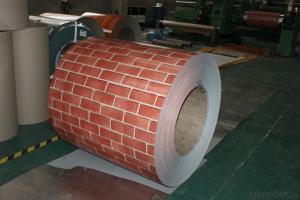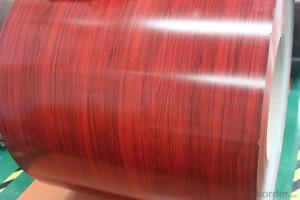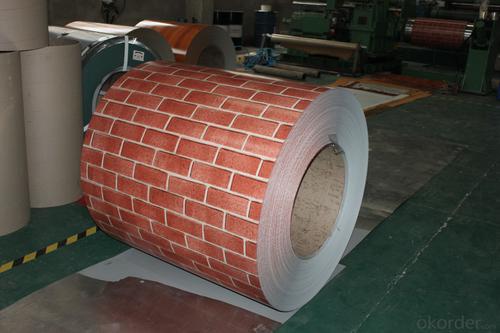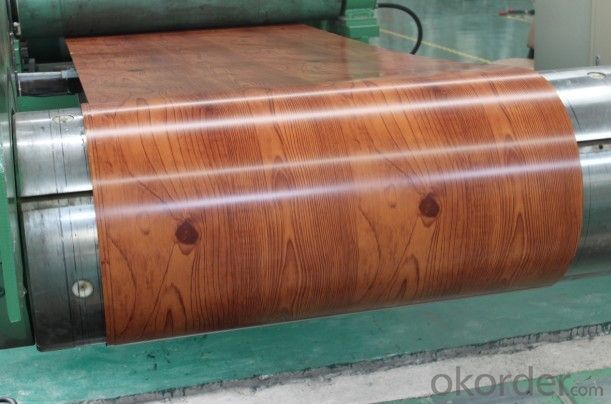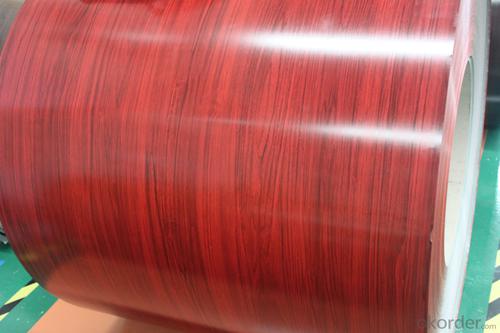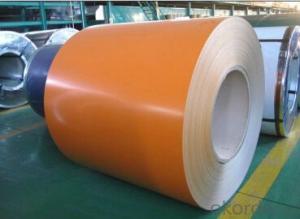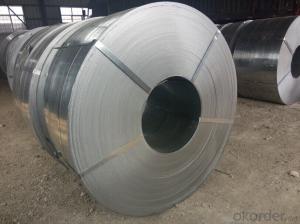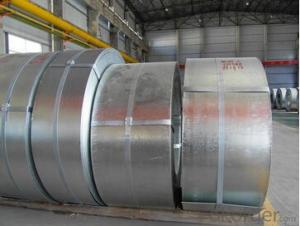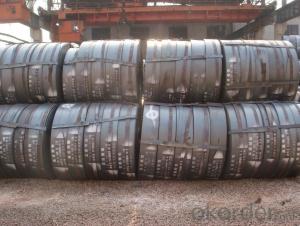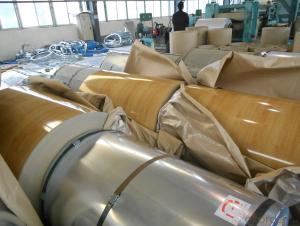Good Quality Printing Steel Plate-Wooden Pattern-0.45*1250 Z80g
- Loading Port:
- China Main Port
- Payment Terms:
- TT OR LC
- Min Order Qty:
- -
- Supply Capability:
- 5000 /month
OKorder Service Pledge
OKorder Financial Service
You Might Also Like
Good Quality Printing Steel Plate-Wooden Pattern-0.45*1250 Z80g
1.strong corrosion resistance
2.surface quality
3.conducive to deep processing,such as the embossed PPGI,printed PPGI&punching PPGI
4.economy and practicality
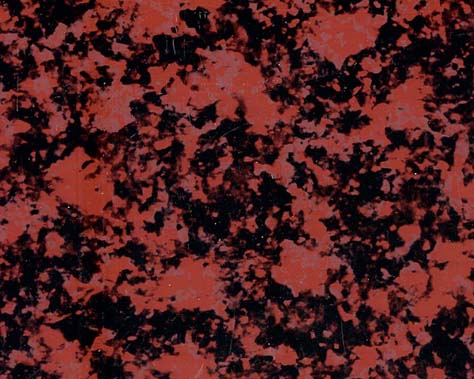
1.Thickness:0.16-2.0mm
2.Width:600-1500mm
3.Material: SGCC,SGCD,SECC,SECD,DX51D+Z
4.Zinc coating:40-275G/M2
5.Surface Structure: galvanized ,zero spangle, regular spangle or normal spangle
6.Surface treatment: chromated and oiled, chromated and non-oiled
7.Color:all RAL series
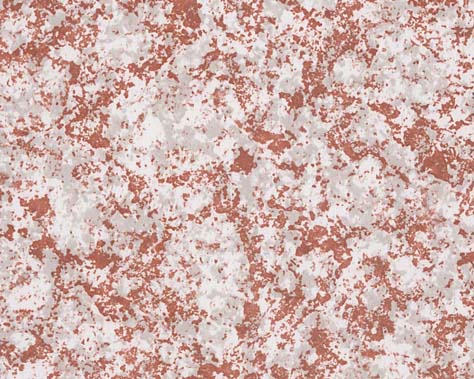
1.Refrigerator shutter &side panels, Washer, Freezers, Air conditions,
2.Rice Cooker, Microwave Ovens, Water Heaters, Sterilization Cabinets, Range Hoods
3.Computer Panels , DVD/DVB panels, TV back panel etc.
Teaching Board: whiteboard, blackboard, green board(chalk board).
Indoor Decoration: Fireproof Door, kitchen cabinet, wall decoration.
Shipping Industries: Ship, Fecht, Marine.
- Q: What are the factors that affect the wear resistance of steel strips?
- The factors that affect the wear resistance of steel strips include the composition of the steel, the hardness of the steel, the presence of impurities or defects, the surface finish of the strips, the environmental conditions in which the strips are used, and the level of maintenance and care provided to the strips.
- Q: What are the cost considerations for steel strips?
- The cost considerations for steel strips include factors such as the grade and quality of the steel, the thickness and width of the strips, the manufacturing process involved, the quantity ordered, and any additional processing or treatments required. Market demand, transportation costs, and fluctuations in raw material prices also impact the overall cost of steel strips.
- Q: How do steel strips compare to other materials in terms of machinability?
- Steel strips are known for their excellent machinability compared to other materials. Their high strength and durability make them easy to work with using various machining processes, such as cutting, drilling, and milling. Additionally, steel strips have good dimensional stability, ensuring precise and accurate machining. This makes them a preferred choice in many industries where machinability is a crucial requirement.
- Q: How are steel strips used in the energy sector?
- Steel strips are used in the energy sector for various applications, including the manufacturing of power transformers, electrical motors, and generators. These strips are also used in the construction of wind turbines and solar panels, providing structural support and enhancing their efficiency. Additionally, steel strips are utilized in the production of pipelines and transmission towers, ensuring the safe and efficient distribution of energy resources.
- Q: How do steel strips perform in terms of creep resistance?
- Steel strips generally have good creep resistance due to their high strength and stiffness. The low carbon content in steel helps in minimizing the creep deformation at high temperatures and under prolonged stress. Additionally, the microstructure and composition of the steel can also be modified to enhance its creep resistance. Overall, steel strips are known for their favorable performance in terms of creep resistance.
- Q: What are the load-bearing capacities of steel strips?
- The load-bearing capacities of steel strips vary depending on their thickness, width, and the type of steel used. Steel strips are designed to withstand significant amounts of weight or load without bending or breaking. The load-bearing capacity is typically measured in terms of the maximum load that the strip can bear per unit of length or area, usually given in pounds or tons. The load-bearing capacity of a steel strip can be determined by considering various factors, such as the yield strength, ultimate tensile strength, and elastic modulus of the steel material. These properties dictate the strip's ability to resist deformation under load. Different steel grades have different load-bearing capacities. For instance, high-strength steel strips, such as those made from alloyed or heat-treated steel, generally have higher load-bearing capacities compared to standard carbon steel strips. To accurately determine the load-bearing capacity of a specific steel strip, it is necessary to consult engineering design codes, standards, or technical specifications. These resources provide detailed information on load-bearing capacities based on the specific dimensions and properties of the steel strip. It is important to note that load-bearing capacities should be considered in conjunction with other factors, such as safety factors, environmental conditions, and the intended application of the steel strip. Consulting with a structural engineer or a knowledgeable professional is highly recommended to ensure the appropriate selection and usage of steel strips for a specific load-bearing application.
- Q: How are steel strips protected against electrical conductivity?
- Steel strips are protected against electrical conductivity by applying an insulating coating, such as paint or a non-conductive polymer, which acts as a barrier between the steel surface and the electrical current, preventing the flow of electricity through the strips.
- Q: Can steel strips be used in the production of coins?
- Yes, steel strips can be used in the production of coins. Steel is a commonly used material for coin production due to its strength, durability, and resistance to corrosion. Steel strips are often used as the base metal for coins and are typically coated with other metals such as copper or nickel to enhance their appearance and protect against wear and tear. Steel strips are easily stamped or engraved with the desired design and can be efficiently produced in large quantities, making them a cost-effective choice for coin manufacturing.
- Q: What are the specifications for steel strips used in the production of air conditioning components?
- The production of air conditioning components utilizes steel strips with varying specifications, which are dependent on the manufacturer's specific requirements and the intended application. However, there are several common specifications that are frequently taken into consideration: 1. Material: High-quality steel is typically used for the strips, possessing specific properties such as excellent corrosion resistance, high strength, and good formability. Common types include stainless steel, galvanized steel, or carbon steel. 2. Thickness: The thickness of the steel strips may differ based on the specific component being produced, and it is commonly specified in terms of gauge or millimeters (mm). Thinner strips are suitable for lightweight components, while thicker ones may be necessary for structural integrity. 3. Width: The width of the steel strip is an important specification and is determined by the dimensions of the component it will be used for. It is typically measured in millimeters (mm) or inches. 4. Surface Finish: The surface finish of the steel strip is crucial for both aesthetic and functional purposes. It should possess a smooth and clean surface to ensure proper adhesion of coatings or other necessary materials. 5. Tolerance: The tolerance level for the dimensions of the steel strip is critical to ensure proper fit and functionality of the air conditioning components. It is typically specified as a range or maximum deviation from the desired dimensions. 6. Mechanical Properties: The mechanical properties of the steel strip, including tensile strength, yield strength, and elongation, are significant factors to consider. These properties determine the strip's ability to withstand the stresses and loads during production and subsequent operation of the air conditioning components. 7. Coating or Plating: Depending on specific requirements, the steel strips may require coating or plating with materials like zinc, aluminum, or other corrosion-resistant coatings. This enhances their durability and resistance to environmental factors. In conclusion, the specifications for steel strips used in the production of air conditioning components can vary based on the manufacturer's needs and the intended application. It is essential to consult the manufacturer's guidelines or communicate with suppliers to ensure that the steel strips meet the necessary specifications for optimal performance and durability of the air conditioning components.
- Q: What are the different treatments applied to steel strips for specific applications?
- There are several different treatments that can be applied to steel strips for specific applications. These treatments are designed to enhance the properties of the steel and make it more suitable for its intended use. One common treatment is heat treatment, which involves heating the steel strip to a specific temperature and then cooling it rapidly. This process can be used to improve the hardness, strength, and toughness of the steel. Heat treatment can also be used to alter the microstructure of the steel, which can improve its machinability or resistance to wear. Another treatment commonly applied to steel strips is surface coating. This involves applying a thin layer of another material to the surface of the steel. The coating can provide protection against corrosion, improve the aesthetics of the steel, or enhance its performance in specific environments. Some common types of surface coatings include zinc plating, galvanizing, and powder coating. Some steel strips may also undergo cold rolling or annealing processes. Cold rolling involves passing the steel strip through a series of rollers at room temperature to reduce its thickness and improve its surface finish. Annealing, on the other hand, involves heating the steel strip to a specific temperature and then cooling it slowly to relieve internal stresses and improve its ductility. In addition to these treatments, steel strips can also be subjected to various mechanical processes, such as bending, cutting, or shaping, to achieve the desired dimensions and form. These processes can be performed before or after any of the above treatments, depending on the specific requirements of the application. Overall, the choice of treatment for a steel strip depends on the specific application and the desired properties of the final product. By applying the appropriate treatment, steel strips can be tailored to meet the needs of various industries, such as automotive, construction, and manufacturing.
Send your message to us
Good Quality Printing Steel Plate-Wooden Pattern-0.45*1250 Z80g
- Loading Port:
- China Main Port
- Payment Terms:
- TT OR LC
- Min Order Qty:
- -
- Supply Capability:
- 5000 /month
OKorder Service Pledge
OKorder Financial Service
Similar products
Hot products
Hot Searches
Related keywords
